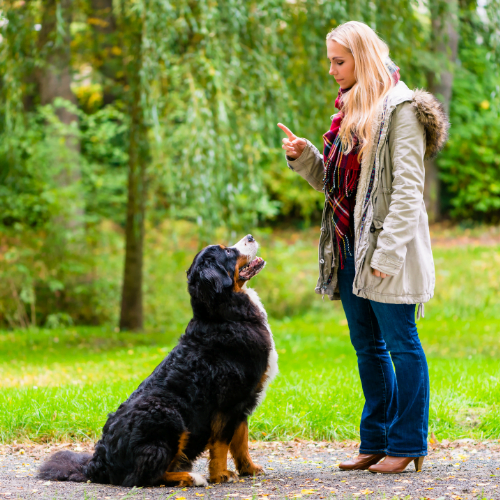Estimated reading time: 3 minutes
As a dog owner, you may have heard of the term “operant conditioning.” But what exactly is it and why is it important in dog training? In this blog post, we’ll dive into the basics of operant conditioning and how you can use it to train your furry friend.
Understanding Operant Conditioning
Operant conditioning is a type of learning that occurs as a result of the consequences of a behavior. It was first introduced by psychologist B.F. Skinner in the 1930s and is widely used in animal training.
In operant conditioning, there are four quadrants that define the consequences of a behavior:
- positive reinforcement
- negative reinforcement
- positive punishment
- negative punishment
Positive reinforcement is when a desirable behavior is followed by a reward, such as giving your dog a treat for sitting on command. Negative reinforcement is when a behavior is strengthened by removing an unpleasant stimulus, such as stopping a loud noise once your dog performs a specific action.
Positive punishment is when an undesirable behavior is followed by an aversive consequence, such as scolding your dog for chewing on your shoes. Negative punishment is when a desirable behavior is weakened by removing a pleasant stimulus, such as taking away a toy if your dog jumps on people.
Applying Operant Conditioning to Dog Training
Now that we understand the four quadrants of operant conditioning, let’s explore how they can be applied to dog training.
When choosing rewards for your dog, it’s essential to select something that your dog finds rewarding. This could be treats, toys, or praise. You want to reinforce good behavior and make it more likely to occur in the future.
Timing and consistency are also critical in operant conditioning. You want to reward your dog immediately after they perform a desirable behavior, so they associate the reward with the action. Additionally, you want to be consistent with the rewards, so your dog knows what to expect.
Basic commands are a great place to start when using operant conditioning to train your dog. For example, you can use positive reinforcement to teach your dog to sit on command. Every time your dog sits, give them a treat or praise them.
If your dog exhibits problem behaviors, such as jumping on people, you can use positive punishment to discourage the behavior. Whenever your dog jumps on someone, say “no” firmly and turn away from them. Over time, your dog will learn that jumping on people is not desirable.
Conclusion
Operant conditioning is a powerful tool in dog training. By understanding the four quadrants and applying them to your training methods, you can reinforce good behavior and discourage problem behaviors.
Using appropriate rewards, timing and consistency, and addressing problem behaviors are all crucial elements of using operant conditioning to train your dog. Operant conditioning helps to create a stronger bond between you and your dog and improve their overall behavior.
If you’d like to learn more about operant conditioning, there are many additional resources available, including books, online courses, and professional trainers who specialize in this type of training.








